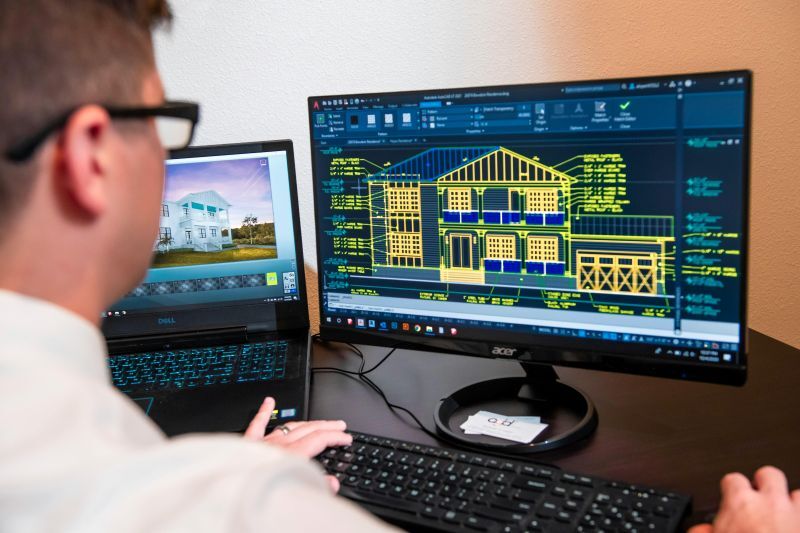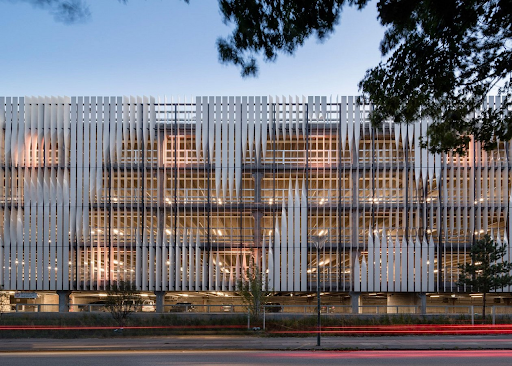Best Computational Design Practices in 2025 (Every Architect Should Know)
%20(1)-1.jpg)
Table of Contents
What if the spaces we designed could adapt, respond, and evolve just like living organisms? As architecture enters a new digital era, computational structures are no longer futuristic concepts but essential tools in solving real-world design challenges. Whether it's climate-responsive facades or energy-efficient forms, architects today are expected to think beyond aesthetics and deliver performance-led, sustainable outcomes.
To meet growing demands, the industry is shifting to smarter workflows powered by data and algorithms. That’s where the best computational design practices in architecture come in, making design more creative, efficient, and environmentally responsive.
In this blog, we’ll explore the evolving design mindset of 2025 and how adopting the right computational practices can help architects stay ahead of the curve.
Why Should Architects Learn Computational Design?
As architecture grows more complex and interconnected, learning computational design empowers architects to solve problems more efficiently, design with greater precision, and respond to real-world challenges with smarter, data-driven solutions. Here are some key reasons why every architect should consider learning computational design.
1. Earn 50% More than the Industry Average
Computational designers enjoy excellent career prospects and often command higher salaries compared to traditional architectural job roles. With firms increasingly relying on data-driven approaches, professionals with this skillset have a clear edge in the job market.
2. Unlock Your Creativity and Improve Productivity
By using computational processes, you can quickly explore multiple design options, test them, and refine your ideas without starting from scratch. It’s a powerful way to solve real-world design challenges with greater efficiency and precision.
3. Design with Data and Intent
With computational design architecture, decisions are based on logic, performance, and real-time data rather than assumptions. This makes your designs more informed, responsive, and tailored to the needs of the environment and end users.
4. Work Smarter with Automation
Repetitive, time-consuming tasks can be automated using scripts and parametric design tools. This allows you to spend less time on drafting and more time focusing on meaningful design exploration and strategy.
5. Enhance Collaboration Across Disciplines
Computational tools create a common ground between architects, engineers, and other specialists. Sharing parametric models and performance data improves coordination, making design development smoother and more aligned.
Best Computational Design Practices for Architects
Here are some of the most effective computational design practices that can help architects design smarter, work faster, and stay ahead in an ever-evolving industry.
1. Embrace Parametric Modelling
Parametric modelling is like having a flexible design assistant. You define rules or relationships between elements, and the system automatically adjusts everything when one variable changes. Instead of redrawing or starting over every time your client changes the brief, you can tweak a parameter and instantly see the impact. This is especially useful when working with complex forms, curved structures, or performance-based design.
2. Apply Algorithmic Thinking
Algorithmic thinking isn’t about writing code all day, it’s about learning to approach design problems step by step. Say you’re working on a master plan - instead of drawing each building block by hand, you define rules like distance, height, or view access, and let the system generate options for you. This kind of thinking helps you work smarter, not harder. It allows you to test multiple outcomes, make informed decisions, and bring consistency to your design logic, which is at the heart of effective computational design practices today.
3. Design with Real-Time Data
Designing with real-time data means you're no longer guessing how your building might perform, you know. You can feed your model with site-specific information like sun angles, wind patterns, and even footfall density to see how your design responds. Want to reduce heat gain or improve ventilation? The data helps you adjust the shape or orientation instantly. It makes sustainability less of a checkbox and more of a built-in feature, helping you design spaces that are comfortable, efficient, and climate-ready from day one.
4. Collaborate Through Shared Digital Platforms
Shared digital platforms like BIM or cloud-based collaboration tools let teams work on the same model, in real time, from anywhere in the world. This means fewer delays, better coordination, and clearer communication. You can get instant input from structural engineers, lighting consultants, or clients without waiting for weekly catch-ups. It streamlines the entire process and reduces the risk of last-minute surprises.
The Future of Computation Design in Architecture
Advances in computational design architecture are transforming how we envision and build our spaces. By integrating algorithms, data and parametric systems, architects can create structures that are more efficient, sustainable and responsive than ever before.
As machine-powered tools become increasingly central to designing complex shapes, optimising energy use and simulating environmental performance, architecture is evolving into a truly adaptive discipline, one that learns from nature and responds to context, user needs and shifting climate demands.
- Architects will increasingly use data-driven design to address climate and environmental challenges more accurately.
- Parametric modelling will enable quicker decision-making and more flexible design options during the early concept phase.
- AI-integrated tools will assist in generating optimised building forms based on site data, user behaviour and performance goals.
- The role of architects will shift from draughting to strategic problem-solving and system thinking.
- Customised construction through digital fabrication and robotic technologies will become more common.
How to Get Started with Computational Design in 2025
If you’re curious about computational design but unsure where to begin, Novatr’s course is a great place to start. Designed especially for architects and designers, this course breaks down complex topics into practical and hands-on learning.
With expert mentors and a future-focused curriculum, you’ll gain both technical skills and real-world insight. At INR 2,45,000, it’s a smart investment for anyone ready to level up their design journey in 2025.
- The course helps you understand computer software for architecture design like Rhino, Grasshopper, and Revit through guided, step-by-step modules.
- You’ll work on real-world projects that give you practical experience and a solid portfolio.
- Access to live sessions and recorded content means you can learn at your own pace, without pressure.
- Industry professionals will guide you with mentorship that’s both insightful and career-focused.
- By the end of the course, you’ll have a clear understanding of how to apply computational design to real architectural problems.
- It’s ideal for architects, designers, or fresh graduates looking to future-proof their skills and boost job prospects.
- You’ll be joining a growing community of forward-thinking professionals shaping the future of architecture.
Conclusion
Computational design is no longer just a niche skill, it’s becoming an essential part of architectural practice. As projects grow more complex and the need for smarter, more responsive solutions rises, embracing these tools and methods is key to staying relevant. It's not about replacing creativity but enhancing it with the power of technology and data.
If you're looking to dive deeper into this space, Novatr offers the perfect starting point. It's a platform built for future-ready architects and designers. Their Master Computational Design Course for Real-World Application equips you with the knowledge and confidence to apply these skills across actual projects, not just theory.
For more insights and to stay updated with the latest trends in architecture and design, be sure to explore Novatr’s Resource Page!

 Thanks for connecting!
Thanks for connecting!


.png)
.jpg)




